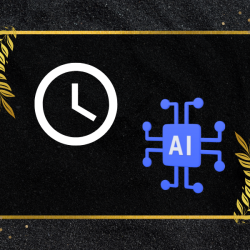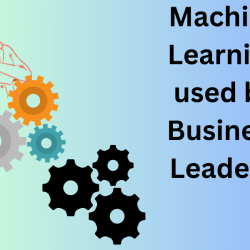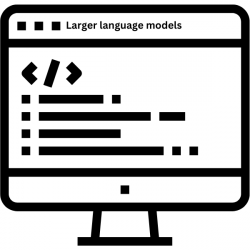Computational Tools and Technology


Computational Tools and Technology
Introduction to Computational Tools and Technology
Introduction to Computational Tools and Technology
In today’s digital world, businesses of all sizes are leveraging the power of Computational Tools and Technology (CTT) to improve their operations and increase efficiency. CTT refers to a range of tools and technologies such as software, hardware, algorithms, networks, and databases that utilize computer systems to process data quickly and reliably.
The Benefits of Using Computational Tools & Technologies
Using CTT can provide businesses with numerous benefits such as enhanced decision making capabilities, streamlined processes, better resource management, cost savings, improved customer experience, increased productivity, and increased accuracy. Implementing CTT can also enable businesses to gain valuable insights into their data sets that would otherwise be difficult or impossible to uncover. With this knowledge in hand, organizations can gain valuable insights into trends or patterns that could lead them toward greater success.
Different Types of Computational Tools & Technologies Available
CTT includes a wide range of tools and technologies ranging from structured query language (SQL) databases to machine learning algorithms. Organizations can choose from cloud based solutions or on premise configurations depending on their business requirements. Additionally, organizations may also require additional software development tools such as compilers or containerization applications for deploying their applications securely.
Challenges Associated With Using Computational Tools & Technologies
Although using CTT brings many benefits for businesses interested in streamlining their operations and becoming more productive, there are several potential challenges associated with this technology. These include ensuring the accuracy of results obtained from using these tools; data security concerns; challenges associated with the complexity of operating multiple systems; and the cost associated with purchasing or licensing these services. Investment Banking Program
Algorithms, Methods, and Techniques
The choice of algorithm used to tackle a given challenge depends on the type of problem being solved. Different algorithms have been developed for different types of problems, with variations tailored for specific applications such as sorting, searching, graph theory or machine learning. It’s no wonder then that algorithms have become an invaluable tool in our increasingly technologically dependent society.
Methods are slightly different from algorithms in that instead of focusing on finding a single solution, they focus on finding a range of possible solutions. Methods allow you to take a step back from the problem and explore all angles before coming to any conclusions. They also provide you with the opportunity to analyze which method may offer the best solution before committing fully to one course of action. Investment Banking Certification
Techniques offer yet another approach for solving problems. Techniques involve the use of specific tools such as decision trees or network graphs that help visualize scenarios and identify patterns or insights that may not otherwise be apparent. Using techniques helps you focus on developing deeper understanding by analyzing data more accurately than would otherwise be possible through trial and error approaches alone.
Programming Languages for Computation
There are many programming tools available to help you perform computations. From high level languages like C++/Java to scripting languages such as Python/Perl to functional programming languages such as Lisp/Scheme, each language provides unique features that make them suitable for specific types of applications. Depending on your skills and the type of problem you need to solve, one language may be more suitable than another.
In addition to knowing which language to use, it’s also important to understand how algorithms work in order to create efficient programs. Algorithms are steps or instructions that describe how a problem can be solved. Understanding how operations will be executed within the code is essential for developing complex programs. This understanding can also enable you to identify potential weaknesses and errors in your program before it is released into production.
Finally, programming requires problem solving skills in order to develop programs that operate correctly while adhering to industry standards and best practices. Writing code that is efficient, well structured, secure, and easily maintainable takes time and practice but it’s worth investing the effort when creating software applications or automating tasks with technology.
Data Processing in Computational Tool Development
Data collection is the first step in the process, as it involves gathering all relevant information from sources such as databases, public records, surveys and online outlets. Once collected, you need to preprocess this data to prepare it for further analysis. This involves cleaning up files and structuring information into formats that are compatible with whatever computational tool you’re building. Visualization is then used to discover patterns and trends from the data by representing it graphically.
Following visualization, you can use data mining & analysis techniques to further explore the underlying patterns in your data. By sorting through all available information, you can gain meaningful insights that can be used for decision making purposes. After discovering what you need from the data set, you must validate its accuracy & reliability before using it in your tool development project. You may also need to store your processed data securely on remote servers or local networks depending on its sensitivity and purpose of use.
By understanding each step in the data processing cycle for tool development projects, you can ensure that your project runs smoothly by producing accurate results derived from trustworthy sources. Data processing is a critical component of any successful computational tool development so make sure to do adequate research before beginning any project involving digital processes or machine learning technologies. Investment Banking Course
Software Engineering of Computational Tools
At its core, software engineering is the process of developing high quality programs that are optimized to run efficiently and securely on various kinds of computers. It means understanding how computer systems work and how to make them work better with innovative ideas and solutions. To do this requires an understanding of processes, tools, and techniques used in creating software products such as databases, platforms, applications and more.
When it comes to creating these kinds of products through software engineering, you need to understand the principles behind program design and development. This includes outlining objectives and functions for a product as well as designing algorithms to achieve specific goals. It also involves coding for the product, using automation techniques like debugging or testing procedures to ensure any potential errors are caught early on in the development process.
Data analysis is also a key component of software engineering as it involves collecting data from different sources before modeling it into useful information for further evaluation or decision making. This is necessary when programming new applications or debugging existing ones as it allows you to gain valuable insight into how they are performing under certain conditions or situations. With powerful computational tools available today such as machine learning algorithms or artificial intelligence tools, data analysis has become much more efficient over time too.
Machine Learning for Computation
As a professional in the field, you should be aware that machine learning for computation offers various benefits when it comes to data analysis. ML algorithms can be used to automate tedious tasks, allowing you to cut down on the time it takes to generate insights from data sets. Additionally, ML algorithms can help with recognizing patterns in complex datasets more quickly. This is very useful when it comes to predictive analytics or uncovering correlations.
Furthermore, there are a number of AI applications that make use of natural language processing (NLP). This allows machines to understand language better and interpret complex sentences or phrases more accurately. By utilizing NLP for computer vision techniques such as facial or object recognition, the results are generally more accurate than before. Additionally, NLP can be used for analyzing text or creating visualizations in order to gain insights into large amounts of textual data.
In conclusion, machine learning for computation is an incredibly powerful tool that can greatly improve the speed and accuracy of data analysis tasks. By understanding the various methods available such as ML algorithms, statistical models and AI applications which all make use of pattern recognition and computer vision techniques you can take advantage of all these technologies have to offer. Corporate Investment Banking
Artificial Intelligence and Robotics in Computing Tools
Through the use of automation, machines can now be utilized to take care of tedious tasks that would have otherwise required manual labor. This technology has allowed companies to increase efficiency and accuracy when handling large volumes of data. By utilizing machine learning with predictive analytics systems, businesses can now better predict when certain outcomes may occur. Natural language processing is another area where AI has made great strides; this technology allows computers to comprehend natural languages in order to answer queries more accurately than ever before.
At the same time, advancements in robotics have created autonomous agents capable of executing physical tasks without direct human involvement. These autonomous robots are being applied across various industries for a range of operations; from manufacturing to medical applications. Additionally, computer vision technologies allow machines to interpret visual information from cameras or other imaging devices; this can be used for security surveillance or facial recognition systems.
The use of text retrieval & summarization tools also allow computers to find specific information within longer documents more efficiently than humans can by scanning for relevant keywords or phrases related to the search query. Investment Banking






Ingen kommentarer endnu